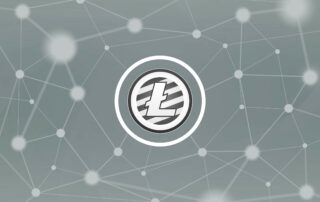Ethereum scaling solution, Plasma, could facilitate ‘billions of transactions per second’
The architect known for conceptualizing the Lightning Network, an off-chain scaling solution for Bitcoin, has done it again. On August 8, Joseph Poon, and Ethereum’s Vitalik Buterin, published a white paper titled Plasma: Scalable Autonomous Smart Contracts. Poon first conceived the high-level construction for Plasma in mid-2014, before the Lightning Network paper was published, before Frontier was released on Ethereum, and when scaling on Bitcoin Talk was just a theoretical slow moving disaster.
Segwit2x, ‘The New York Agreement’
On May 23rd the Digital Currency Group released a statement declaring that 58 signatories had agreed on a way to end Bitcoin’s ‘scaling debate’. Known as the New York Agreement (NYA) it was said to be a compromise between the two sides of the debate — those who want to achieve scaling through Segregated Witness (Segwit) and those who prefer to scale by increasing the block size. It consists of two sequential phases — to activate Segwit using BIP 91 (making it compatible with the UASF) and then to hard fork the base block size to 2 MB ninety days later.
Segwit locking in on Bitcoin
On Wednesday morning around 10:40 UTC, the Bitcoin software upgrade known as SegWit will lock-in. Although a two-week waiting period follows before full activation, the lock-in makes it impossible for miners to change their minds about the upgrade without forfeiting their mining income. An upgrade process called BIP 9 governs how SegWit and other large, possibly contentious upgrades are made to the Bitcoin network. In this case, BIP 9 calls for 95% of miners to signal agreement for the upgrade within a 2016 block period, or roughly 2 weeks.
The blockchain infrastructure landscape: A first principles framing
How are Ethereum, IPFS/Filecoin, and BigchainDB complementary? What about Golem, Polkadot, or Interledger? I often get questions like this. So, I decided to write about how I answer those questions, via a first-principles framing. The quick answer: there’s no one magic system called “blockchain” that magically does everything. Rather, there are really good building blocks of computing that can be used together to create effective decentralized applications. Ethereum can play a role, BigchainDB can play a role, and many more as well. Let’s explore…
All roads lead to Segwit
There are currently three proposals for activating Segwit on Bitcoin — Segwit2x, BIP 91 "Segsignal," and BIP 148 "UASF." The first two are intended only for use by miners and the third is primarily being run by users. We’ll take a look at each one in turn and show they all use a very similar approach to achieving their shared goal. We’ll also look at the differences between them and see what effects they can have on one another.
A mark of one’s existence – records in the blockchain
Part of being a human is wanting to leave a mark on the world. Within us lies the deep need to be remembered, in some form, after we die. We see it in the Cueva de las Manos - Cave of the Hands, where the inhabitants left the outlines of their hands painted on the walls as early as 13'000 years ago.
Lcoin aids antifragility in the Litecoin Network
Dubbed the “silver to Bitcoin’s gold,” Litecoin (LTC) has been riding the crytocurrency uptrend as wave after wave of bullish news has driven its spot price over US$45, or 0.017 BTC. But beyond price, the Litecoin development playground is also seeing expansion as far as its codebase is concerned.
Three Technical Requirements to Connect Blockchains Without a Token
Since I see a lot of downsides to having one large uber-blockchain connecting all others, I will focus on a token-LESS solution. This would have several advantages.
Decred launches decentralized voting process for blockchain protocol changes
Decred recently announced a proposal system that allows users to participate in governance, a major milestone in the projects road map. Allowing stakeholders to vote on changes ensures interested parties have representation in major decisions that will affect the cryptocurrency.
Why connecting all the Blockchains is the final step for mass adoption of Cryptocurrencies
Since the start of Bitcoin in January 2009, we have seen the introduction of a multitude of blockchains across all kinds of areas and financial markets. Today we can count hundreds of public blockchains that amount to a total market cap of almost 100 Billion dollars, excluding many more private blockchain installations.
Blockchain: the age of maturity
When it comes to blockchain, geeks are quickly reaching “The DAO” point, sort of a Godwin point, but for technology. At a period where blockchain experiments of new organizations were abounding, The DAO experiment sounded like the end of the “summer of love”.
What other cryptos can learn from Ripple
While last week I dissected Ripple's XRPs. There are many fundamental features of the Ripple system that other cryptos can learn from. A lot of them are small and obscure to anyone who hasn't had a hands-on experience developing systems on top of cryptos. Luckily enough, that's my speciality.
Civic launches Bitcoin based identity solution
Decentralized identity solutions were a hot topic at Consensus 2017, a popular Bitcoin and blockchain conference event held in New York City earlier this week. One of the most anticipated and full-fledged solutions presented is Civic, which was debuted Gyft co-founder, venture capitalist, and Shark Tank South Africa star Vinny Lingham.
UASF – Bitcoin’s emergency plan to enact SegWit
A full year after the code was released, Segregated Witness (SegWit) still has little chance of being adopted by Bitcoin miners. The Bitcoin Improvement Proposal (BIP) includes a wide range of features, including larger block sizes.
Lightning Network adoption ushers in a new era of cryptocurrency functionality
On May 10 Segregated Witness (Segwit) was activated on Litecoin, allowing Lightning Network (Lightning) transactions from various software clients to settle on the cryptocurrency network.
The blockchain immutability myth
If you ask someone well-informed about the characteristics of blockchains, the word “immutable” will invariably appear in the response. In plain English, this word is used to denote something which can never be modified or changed.














